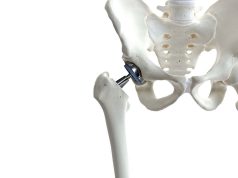Operation safe for select patients; significant clinical benefit seen through five years
THURSDAY, April 30, 2015 (HealthDay News) — Lung volume reduction surgery (LVRS) is safe for select patients, with lasting clinical benefit, according to research presented at the annual meeting of the American Association for Thoracic Surgery, held from April 25 to 29 in Washington, D.C.
Mark E. Ginsburg, M.D., from the Columbia University Medical Center in New York City, and colleagues conducted a retrospective analysis involving 91 patients who were consented for bilateral LVRS between January 2004 and June 2014. LVRS candidates were selected according to the inclusion/exclusion criteria of the Centers for Medicare & Medicaid Services (CMS). Eighty-nine bilateral procedures were performed — 88 percent video-assisted thoracoscopic surgery (VATS; used exclusively from March 2006) and 12 percent median sternotomy.
The researchers observed a 0 percent six-month all-cause surgical mortality rate. After LVRS, the one, two-, and five-year forced expiratory volume in one second (percent predicted) was 36.7 ± 12.9, 33.2 ± 11.1, and 36.0 ± 9.5, respectively, while the maximal workload was 49.1 ± 17.5, 44.4 ± 17.4, and 45.0 ± 18, respectively. For the group, overall survival at one, two, and five years was 0.99, 0.97, and 0.80, respectively. Pulmonary causes accounted for 12 of the 20 late deaths.
“Surgical LVRS remains the gold standard against which all other forms of lung volume reduction must be judged,” Ginsburg said in a statement. “Surgical LVRS should be more widely offered to patients with advanced emphysema who meet CMS selection criteria.”
Copyright © 2015 HealthDay. All rights reserved.








